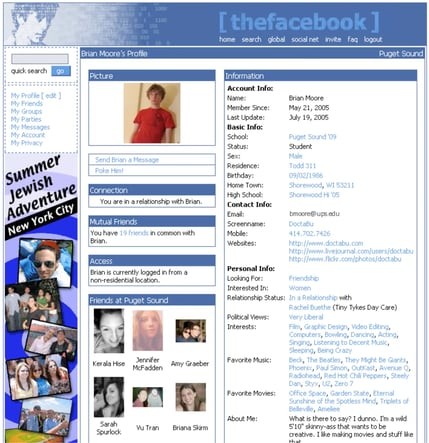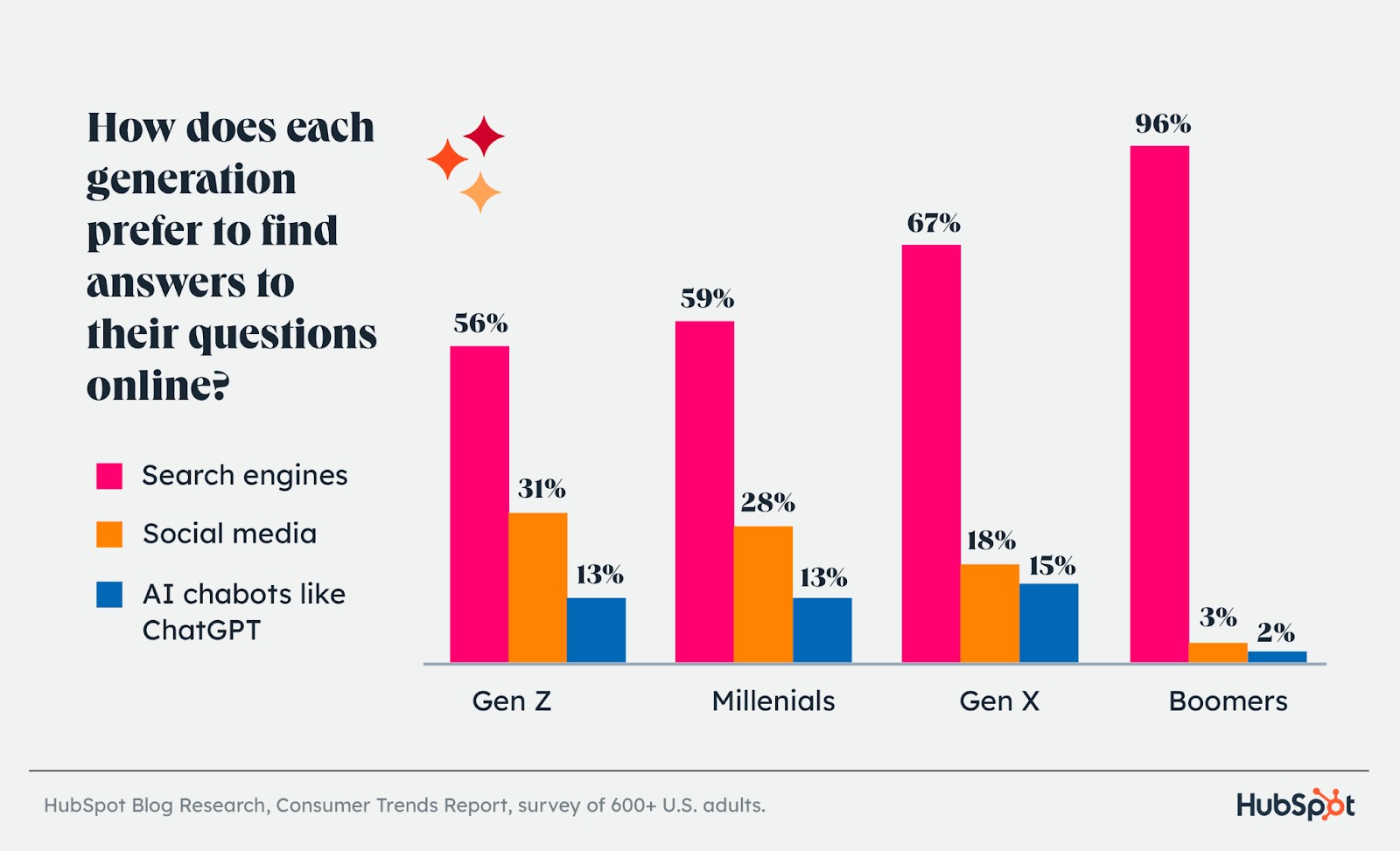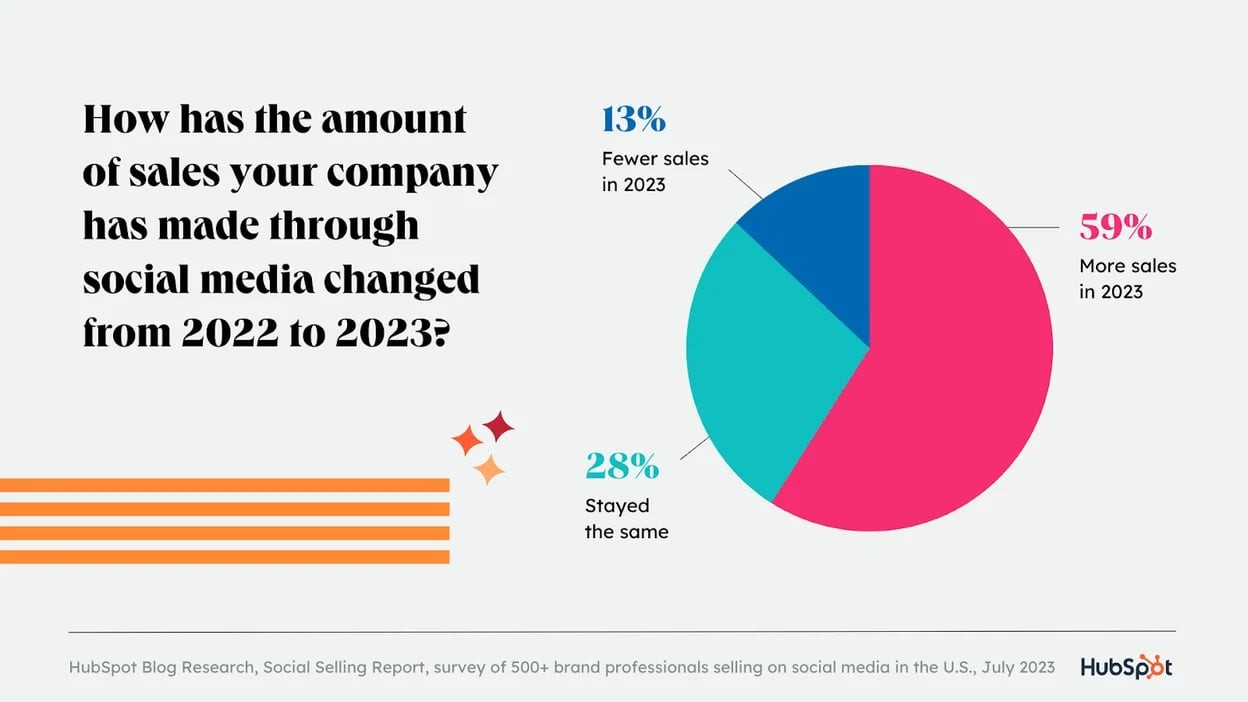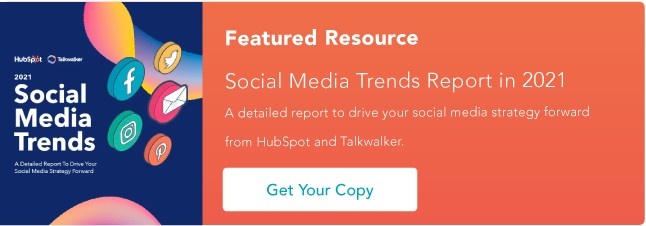Can you believe it's been almost 20 years since Facebook was founded? Perhaps many of you feel like it was just yesterday when “friend” was a noun.
The same goes for YouTube, which made video accessibility and shareability online as simple as can be. And Twitter, for that matter — sponsored tweets have only been around since 2010!
It's interesting to look back at these iconic moments in the last 20+ years of social media. In this post, we’ll go over a complete timeline of social media history and what each network’s usage stats look like now.
Table of Contents
- What is the history of social media?
- The Early Years (1970s - 1990s)
- The Original Social Networks (2002-2007)
- The Visual and Mobile Era (2007 - Today)
- How Social Media Could Evolve Next
What is the history of social media?
The history of social media is characterized by constant innovation, technological advancements, and transformation.
The Early Years
The early years of social media (1970s - 1990s) laid the foundational elements of the platforms we know today.
- 1971 - Ray Tomlinson sent the first email, marketing the beginning of modern electronic mail.
- 1978 - The Bulletin Board System (BBS) is introduced, allowing users to upload and download software and data, read news online, and exchange messages with people in online communities.
- 1985 - America Online (AOL) is founded, and it lets users communicate online via email and messaging.
- 1997 - Six Degrees is launched, and it’s one of the first recognizable social media platforms compared to those. Users could create profiles, make friends, and send messages.
- 1999 - Livejournal became available, allowing people to share information about themselves with friends and other users. It’s one of the earliest blogging platforms and is still operational in 2023.
Birth of The Original Social Networks
What followed the first wave of “social networks” are the platforms we know today, or the initial stages and first versions of those we use today. Friendster, founded in 2002, is one of the first. It lets users connect with friends, share pictures, and discover new content. A steady stream of platforms followed.
- 2003 - LinkedIn is launched as a professional networking platform that connects people in a business context.
- 2003 - Myspace is introduced to the world as a platform for customizable profiles, music sharing, and blogging. It became the largest social media platform when it was in its prime.
- 2004 - Facebook, originally for Harvard students, was founded. Users connected with their friends and shared their thoughts. Facebook is now the world's most popular social networking platform, with 2.9 billion monthly active users. The image below is what the first Facebook profile layout looked like.

- 2005 - YouTube was launched and became the first video-only sharing platform and the first visual-first network. It lets people upload, share, and view other videos made by others. Jawed Karim, one of its founders, shared the first video on the platform titled “Me at the zoo.” Eighteen years later, it has more than 287 million views.
- 2005 - Reddit was launched as a text and community-based platform for people to interact and discuss topics with like-minded people. It was the first discussion-forward website of its kind.
The Microblogging Era
- 2006 - Twitter (now X) is launched, introducing microblogging and real-time communication. It was initially meant to be an SMS-based platform for people to share short updates with their friends. Jack Dorsey, one of its founders, sent the first Tweet, and it said, “just setting up my twttr.”
- 2007 - Tumblr, another microblogging platform, launched and became popular among those engaging in niche fandom communities. It gained 75,000 users in two weeks and currently hosts almost 500 million blogs.
The Visual and Mobile Era
A pivotal moment in social media history came in 2007 when the first iPhone hit the market. It blew open the future potential for social media, as people could now access platforms on the go from a device kept in their pockets.
During this same era, we saw the creation of more platforms that prioritized visuals over all else.
Instagram was the first social media app available on iOS, and it was the first mobile-only platform and the second visual-first platform. It gained 100,000 users in a week, 5 million in 8 months, and now has 2 billion global monthly active users. Social media marketers in 2023 say Instagram has the highest ROI and engagement of all other apps.
The image below is the first layout of an Instagram profile.

From 2007 until today, we also saw the creation and advancements of social media algorithms that offer personalized experiences, niche social media platforms catering to specific interests and communities, and mergers and acquisitions. Let’s go dive into the timeline of events.
- 2010 - Pinterest was launched as another photo-dominating platform, letting users upload and save images for curated mood-board-type experiences.
- 2011 - Snapchat followed Instagram as a mobile-only experience and the first app to popularize disappearing messages and ephemeral content.
- 2011 - Google+ was created, where users could create Circles of people they wanted to connect with and share content exclusive to those micro-networks. It shut down in October 2018.
- 2011 - Keek, another video-sharing social media service, launched. It had 45 million users in its prime and was only available on mobile devices.
- 2011 - Twitch launched as a live-streaming service for broadcasting video game plays.
- 2012 - Facebook buys Instagram.
- 2012 - Twitter buys Vine pre-launch.
- 2013 - Vine is launched, popularizing snackable, short-form video content on mobile devices. While YouTube and Keek were meant for video, it was the first to exist for short-form content. Vine significantly impacted pop culture, popularizing phrases like “Do it for the vine.” Many of the most popular videos are still quoted today.
- 2013 - YikYak is released as a local message board for college students. It was shut down in 2017 after a decline in its user base.
- 2014 - Musical.ly launched, letting users create short lip-sync videos.
- 2015 - Discord launches as an instant messaging and voice chat platform for gamers.
- 2016 - TikTok was launched in China as a short-form video platform, attracting millions of users.
- 2017 - TikTok became available in the United States in late 2017 and has since reached over 130 million downloads. Vine shut down in January of 2017, making TikTok the premier app for short-form video content. Our Consumer Trends Report shows that 73% of Gen Z currently use TikTok.
- 2017 - ByteDance, TikTok’s parent company, purchases Musical.ly.
- 2018 - TikTok and Musical.ly merge.
- 2020 - Clubhouse is launched as an audio-chat networking app. It was initially invite-only and skyrocketed in popularity during the pandemic as it offered a new way to interact. When social distancing regulations eased up, its user base fell.
- 2020 - BeReal is launched as an ephemeral picture-sharing app focused on users showcasing unedited real-life snippets of their lives.
- 2020 - Lemon8 is launched as a lifestyle app that blends elements on Instagram and Pinterest.
- 2021 - YikYak is relaunched.
- 2023 - Meta launches Threads, a text-based conversational app similar to Twitter (now X).
How Social Media Could Evolve Next
Asie from the timeline above, other key moments in social media history include applications adopting similar features as competitors, like Facebook adding photos, Instagram launching “Stories” (a feature similar to Snapchat), and Twitter Spaces allowing users to have voice-chat rooms like Clubhouse.
We also can’t forget the rise of social media as a marketing platform, giving businesses a new and unique way to build brand awareness, interact with audiences, and inspire sales.
Let’s go over some ways that social media could evolve next.
1. Social media will become a search engine:
31% of consumers use social media to search for answers to their questions, and one-fourth of 18 to 54-year-olds prefer to search on social media.

Google has noticed this switch, with one of its executives even saying that Google Search and Maps have lost searchers in younger generations who instead turn to apps like TikTok and Instagram to look for places to eat.
Takeaways for Marketers: With social search on the rise, brands will need to adapt to this desire by making it easier for consumers to discover them on social media by using relevant hashtags on posts and content and making easily identifiable and searchable profiles and usernames.
2. Social shopping is the new frontier for ecommerce.
One of the biggest new waves of social media is the rise of social shopping. Consumers of all generations browse for products and make purchases within social media apps, with Millennials and Gen Z taking the generational lead. Social media marketers predict that consumers will buy products on social media more often than brand websites in 2023, and social sellers say their companies are making more sales on social media this year than last.

Takeaways for Marketers: As consumers continue to use social media as a search engine and discover products, brands will need to embrace social selling and consider leveraging the platforms' tools to make it easier for consumers to purchase the apps they already use.
3. Social Media Customer Service
With the rise of shopping on social media, consumers look to those same platforms for customer service when buying products. Nowadays, 76% of social media marketers say their business offers customer service on social media, and as time goes on, it will likely be more important for brands to offer.
Takeaways for Marketers: When it comes to offering service on social media, businesses already doing so either have a dedicated customer service rep to handle it, or leave it to the marketer in charge of the platform.
Over to You
Social media has always and will continue to evolve and impact how we communicate, drive social movements, and connect worldwide. Every evolution brings new opportunities for marketers and consumers alike.

